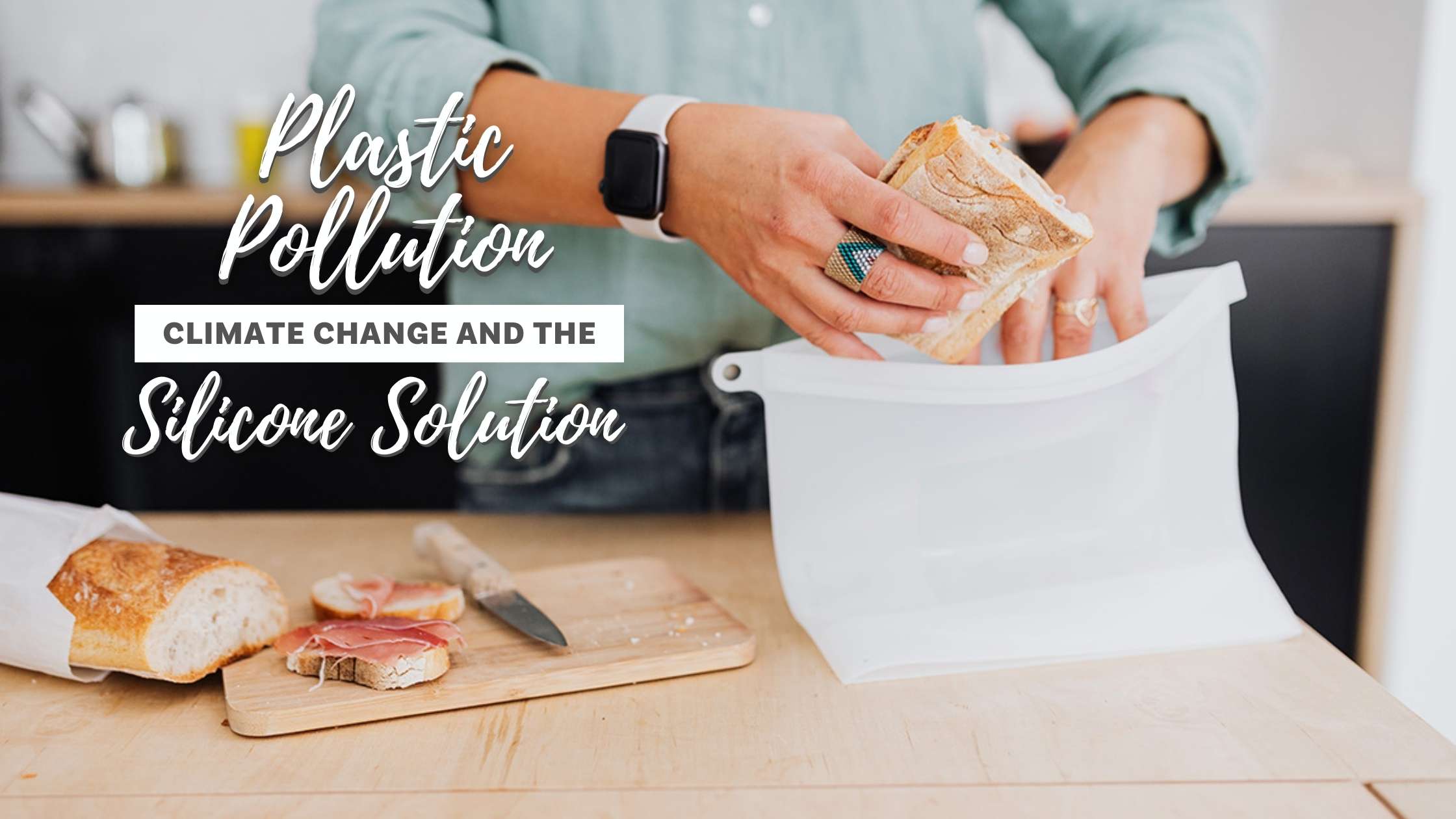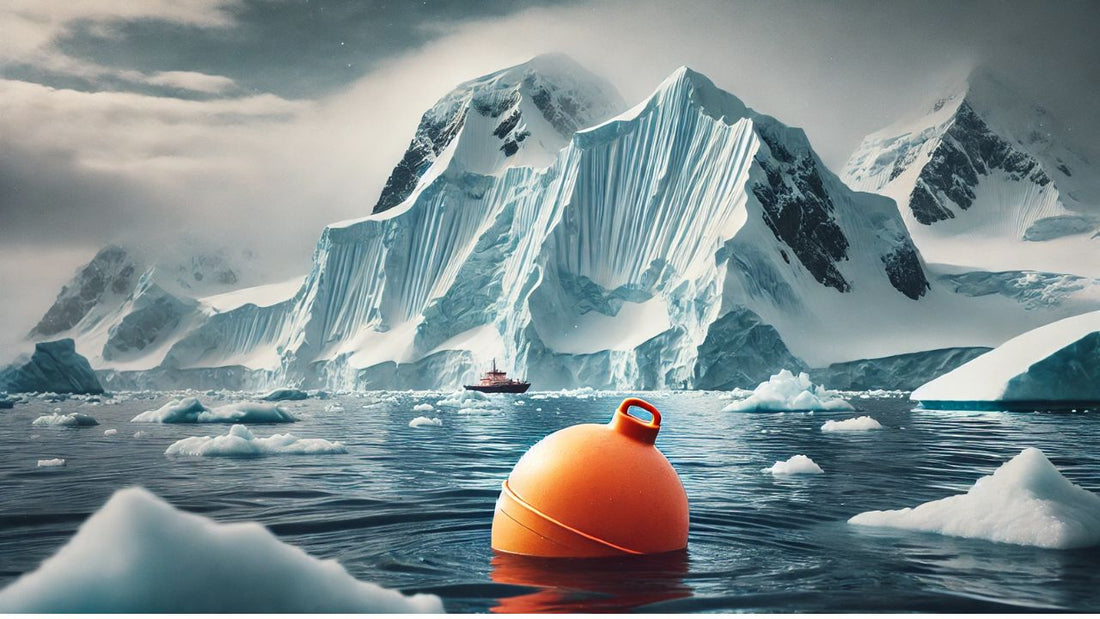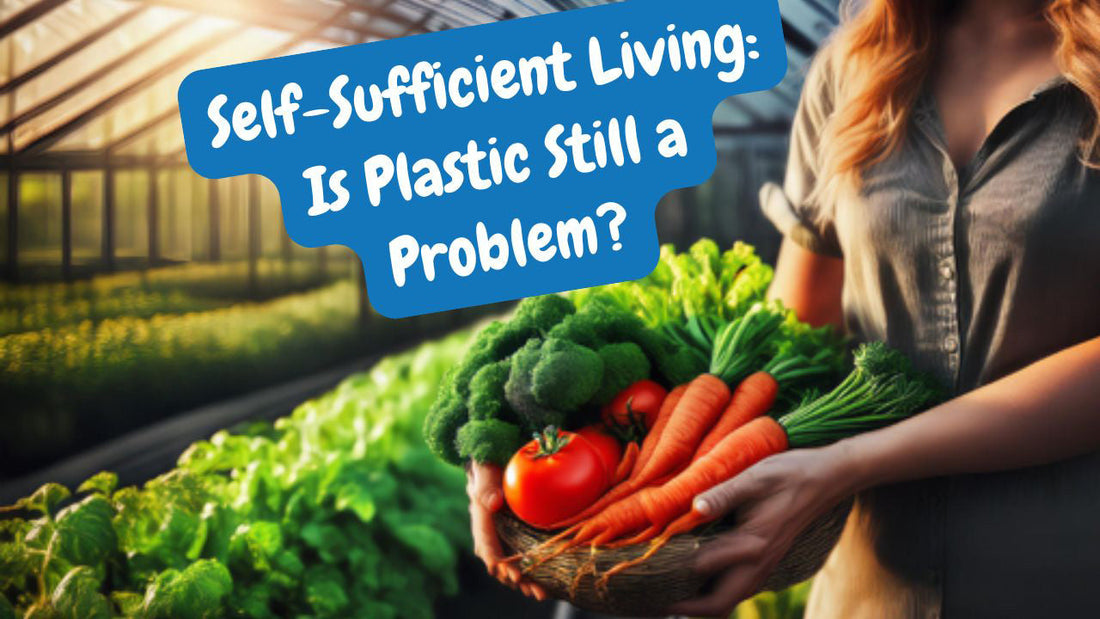If you care about climate change you should care about plastic pollution as well.
Many people make the connection with plastic being bad for the environment, as they see first hand the detrimental impacts from the end of use products littering the planet.
However, plastic pollution also comes from making or burning the product, as well as the fossil fuels used in production.
There’s no doubt that other than its negative impact on the planet, plastic has simply become the norm. Hence the reluctance from the general population to stop using the material. And for those that do want to make a difference, many end up making the switch to what is considered by some, a more eco-friendly alternative — silicone rubber.
Is silicone rubber really eco-friendly?
 It’s often touted that silicone is “just sand”. The main ingredient used to produce silicone is silica, which is derived from sand. But silicone rubber is made using more than just sand. If you want a product that is “just sand” cast your eyes on a glass jar. That is what “just sand” looks like once it’s been melted into a liquid, molded and cooled.
It’s often touted that silicone is “just sand”. The main ingredient used to produce silicone is silica, which is derived from sand. But silicone rubber is made using more than just sand. If you want a product that is “just sand” cast your eyes on a glass jar. That is what “just sand” looks like once it’s been melted into a liquid, molded and cooled.
Glass can be melted down and used again, and again and again. It can be crushed into small fragments which will essentially reduce back to dust or sand. Although it can be harmful when inhaled, it is non-toxic and is considered inert.
Silicone rubber on the other hand, is a flexible product. It is not biodegradable, has very limited options for recycling and it is not made from “just sand”.
Why should you care what silicone is made from, and how does it relate to plastic pollution or climate change?
The one thing that’s never mentioned when it comes to silicone rubber is that it’s actually made from carbon, hydrogen, oxygen and silicon. Yes, that’s right, silicone rubber is made from sand and coke otherwise known as . . . coal.
If you care about climate change, and stopping fossil fuel usage, you really need to ask yourself — “is replacing one plastic product, with a silicone rubber product really the best solution?”
 Like glass, silicone rubber is also inert, however the recyclability of silicone vs. glass is not the same. Unlike glass that can be ground down and turned back into sand, silicone rubber cannot simply return back into its original elements. Silicone can be likened to a boiled egg. Once an egg has been boiled, you cannot simply turn it back into yolk and an albumen (egg white). Once silicone has been molded, it cannot simply be turned back into carbon and sand. Silicone is simply another form of plastic, and unlike biodegradable, or compostable plastic, it doesn’t just break down and go back to nature.
Like glass, silicone rubber is also inert, however the recyclability of silicone vs. glass is not the same. Unlike glass that can be ground down and turned back into sand, silicone rubber cannot simply return back into its original elements. Silicone can be likened to a boiled egg. Once an egg has been boiled, you cannot simply turn it back into yolk and an albumen (egg white). Once silicone has been molded, it cannot simply be turned back into carbon and sand. Silicone is simply another form of plastic, and unlike biodegradable, or compostable plastic, it doesn’t just break down and go back to nature.
Plastic: (of a substance or material) easily shaped or moulded.
There is a statement that is mentioned on several eco-stores: “if silicone somehow ends up in landfill for incineration, it’s converted back into inorganic, harmless ingredients: amorphous silica, carbon dioxide and water vapour.” I’ve also seen silicone described as “sustainable” and durable. It turns out this statement regarding incineration is one that is commonly used on zero waste stores across the globe — the irony is, describing silicone in this way — is not actually a good thing.
![]()
Let’s take a closer look.
Firstly, items don't just randomly end up in landfill there are a lot of steps involved before items are sent to landfill and it starts with placing it in a garbage bin. Secondly, if something ends up in landfill — it’s not headed for incineration, it’s simply going to landfill to be buried, where we can pretend the problem doesn't exist. And like most things, silicone will not biodegrade in landfill.
By replaced they mean — you can purchase more, and the cycle continues, just like plastic.
If the latter statement is also correct, in that it turns into an inorganic compound, this also means that it’s headed for landfill as inorganic compounds do not biodegrade or compost.
Also, if you follow the zero-waste movement, then you would know that zero waste is anti-incineration.
“Zero Waste means designing and managing products and processes to reduce the volume and toxicity of waste and materials, conserve and recover all resources, and not burn or bury them.” – Zero Waste Australia.
Let’s assume it’s true that when silicone rubber is incinerated, that among other things it turns into carbon dioxide. This is not a benefit to the environment. When fossil fuels are incinerated, they release carbon dioxide, a greenhouse gas, into the atmosphere. Greenhouse gases are one of the leading drivers of climate change.
In regards to the other description that states silicone is durable and made using “sustainable” materials. It’s true in that it’s a durable material, and like plastic — perhaps a little too durable. In regards to it being made from sustainable materials —the added non-renewable carbon cancels that out.
If incineration is not the best method of disposal for silicone products, then the alternative is recycling.
How and where is silicone recycled?
While silicone can be sent off for recycling, the question is . . .where? With no clear silicone recycling options in Australia or Canada, we’re left with a handful of options in the United States. By relying on the USA’s limited facilities to recycle these products, we are once again relying on fossil fuels in order to send the products to off to get recycled — and hoping they actually get recycled when they arrive.
If you’re okay with shipping your products off to another country in the hopes that they will be turned into something else useful, then let’s look at what actually happens to your end-of-life silicone products when they are recycled.
Once cured, silicone cannot be simply re-melted, instead hardened leftovers and moulds which are no longer needed can be granulated and added as a filler to newly-mixed silicone.
Alternatively recycled silicone rubber can be downcycled into silicone oil. However, unlike plastic, paper, or glass recycling that is straightforward, downcycling silicone rubber is relatively complicated.
To create silicone oil the silicone rubber is firstly ground into small pieces, heated with high temperatures, filtrated and chemically processed into a liquid. It is then polymerized into silicone oil which is used as the building block for manufacturing a variety of silicone related products — and the cycle continues.
So just like most plastics, in order to recycle silicone back into more products made of silicone, it requires virgin silicone. And the cycle continues.
Is silicone a better replacement than plastic?
There is no denying that silicone rubber is an incredibly useful product, and so is plastic. And therein lies the problem.
However, when we are simply replacing one non-renewable plastic product for another are we really solving an environmental problem or are we simply shifting to another non-renewable solution?
Unfortunately, the answer, or the solution to the plastic pollution problem is never a simple one. Our best option is, where possible, is to choose to refuse these products and seek out alternative products that will eventually return back to nature.
Alternative options exist for so many regular use activities. We can switch to glass products that have the ability to be recycled over and over. We can choose to use compostable bags that are not made from fossil fuels and will return to nature.
It’s your choice — at Eorth we prefer to choose Earth.
References:
https://zerowasteaustralia.org
https://expandusceramicsquestions.com/qa/what-happens-when-you-heat-silicone.html
https://www.ecousarecycling.com/silicone-rubber-recycling-process/





